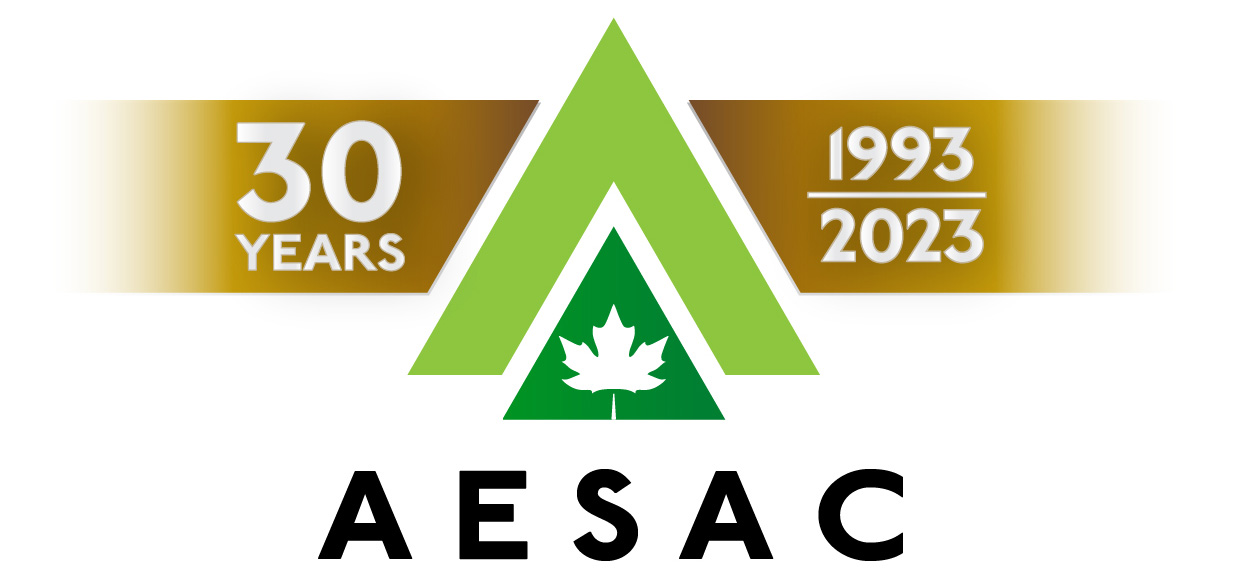- Home
- Training Courses
- Membership
- About Us
- Instructors Blog
- December 2023: All I Want For Christmas
- November 2023: ESA Report Reviews
- October 2023: Can AI Write an ESA Report?
- September 2023: Getting Paid... or Not
- August 2023: Take Me Back...
- July 2023: To Bid or Not To Bid
- June 2023: Selecting a Supplier
- April 2023: Phase 1 Problems, Part 3
- March 2023: Phase 1 Problems, Part 2
- February 2023: Phase 1 Problems, Part 1
- January 2023: Working Outside in Winter
- 2022 Blogs
- 2021 Blogs
- December 2021: Asbestos in your Home
- Sept 2021: Dirty Jars And Other Bad Things… Part 2
- August 2021: Dirty Jars And Other Bad Things… Part 1
- July 2021: How do you want that drawing to look? Part 2
- June 2021: How Did You Want That Drawing To Look? Part 1
- April 2021: So You Need a RSC... Part 2
- March 2021: So You Need a RSC... Part 1
- February 2021: What's In Your Toolbox? Part 2
- January 2021: What's In Your Toolbox? Part 1
- 2020 Blogs
- December 2020: A Day in the Life, Part 2
- November 2020: A Day in the Life, Part 1
- October 2020: Exploring Your Career Path
- September 2020: So You Want To Start Your Own Business - Part 2
- August 2020- So You Want to Start Your Own Business
- June 2020: Effective Communication
- May 2020: Tips For Working From Home
- April 2020: Conducting ESA’s During a Pandemic
- March 2020: It's Not Easy Being Green
- February 2020: Looking Ahead; Bold Predictions for the Next Decade
- January 2020: Looking Back; A Decade in Review
- 2019 Blogs
- 2018 Blogs
- 2017 Blogs
- 2016 Blogs
- 2015 Blogs
- Find an AESAC Member
Menu- Home
- Training Courses
- » Training Courses
- » Webinar Series
- » Calendar of Events
- » Course Registration
- » Course Instructors
- » Testimonials
- Membership
- » Become a Member
- » Certifications
- » Membership Search
- » Update Member Profile
- » Members Only
- » » Member Login
- » » Membership Renewal
- » » Create/Change Password
- » » CESA Certification Application
- About Us
- » About AESAC
- » Course Instructors
- » Contact Us
- Instructors Blog
- » December 2023: All I Want For Christmas
- » November 2023: ESA Report Reviews
- » October 2023: Can AI Write an ESA Report?
- » September 2023: Getting Paid... or Not
- » August 2023: Take Me Back...
- » July 2023: To Bid or Not To Bid
- » June 2023: Selecting a Supplier
- » April 2023: Phase 1 Problems, Part 3
- » March 2023: Phase 1 Problems, Part 2
- » February 2023: Phase 1 Problems, Part 1
- » January 2023: Working Outside in Winter
- » 2022 Blogs
- » » December 2022: Advice To My Younger Self
- » » October 2022: Pre-Purchase Due Diligence
- » » Sept 2022: Words Matter
- » » July 2022: Let Us Come To You
- » » April 2022: Due Diligence
- » » March 2022: Time Management
- » » February 2022: Spinning Augers... Part 2
- » » January 2022: Spinning Augers... Part 1
- » 2021 Blogs
- » » December 2021: Asbestos in your Home
- » » Sept 2021: Dirty Jars And Other Bad Things… Part 2
- » » August 2021: Dirty Jars And Other Bad Things… Part 1
- » » July 2021: How do you want that drawing to look? Part 2
- » » June 2021: How Did You Want That Drawing To Look? Part 1
- » » April 2021: So You Need a RSC... Part 2
- » » March 2021: So You Need a RSC... Part 1
- » » February 2021: What's In Your Toolbox? Part 2
- » » January 2021: What's In Your Toolbox? Part 1
- » 2020 Blogs
- » » December 2020: A Day in the Life, Part 2
- » » November 2020: A Day in the Life, Part 1
- » » October 2020: Exploring Your Career Path
- » » September 2020: So You Want To Start Your Own Business - Part 2
- » » August 2020- So You Want to Start Your Own Business
- » » June 2020: Effective Communication
- » » May 2020: Tips For Working From Home
- » » April 2020: Conducting ESA’s During a Pandemic
- » » March 2020: It's Not Easy Being Green
- » » February 2020: Looking Ahead; Bold Predictions for the Next Decade
- » » January 2020: Looking Back; A Decade in Review
- » 2019 Blogs
- » » November 2019
- » » September 2019
- » » August 2019
- » » July 2019
- » » May 2019
- » » March 2019
- » » February 2019
- » » January 2019
- » 2018 Blogs
- » » November 2018
- » » October 2018
- » » September 2018
- » » August 2018
- » » July 2018
- » » June 2018
- » » May 2018
- » » March 2018
- » » February 2018
- » » January 2018
- » 2017 Blogs
- » » April 2017
- » » June 2017
- » » August 2017
- » » September 2017
- » » December 2017
- » 2016 Blogs
- » » October 2016
- » » September 2016
- » » August 2016
- » » July 2016
- » » June 2016
- » » March 2016
- » » January 2016
- » » December 2016
- » » November 2016
- » 2015 Blogs
- » » April 2015
- » » July 2015
- » » September 2015
- » » October 2015
- » » December 2015
- Find an AESAC Member
A few years ago, I wrote a series of blogs about some of the pitfalls that you may encounter during a Phase Two Environmental Site Assessment (ESA) as well as some of the issues faced when writing Phase One ESA reports. It’s time for a deeper look at some of the problems that you may run into when conducting a Phase One ESA. While there are many components of the ESA that can have potential deficiencies, I am focussing on three main areas that I commonly see in peer reviews – Structural Errors, Procedural Errors and Interpretation Errors. This month I will discuss some of the Structural Errors that may occur in the procurement, initiation and organization of the Phase One ESA.
Regulatory and Guideline Issues
There are numerous regulatory (and non regulatory) regimes and differing guidelines for conducting ESAs in Canada. It’s vital for successful project completion that the assessor and all stakeholders understand the purpose of the ESA, and any associated regulatory requirements. For standard, transactional due diligence, the CSA Standard Z768 is acceptable to most buyers, seller and banks. For Oil and Gas properties in Western Canada, you will need to follow provincial guidelines for the Oil and Gas sector. For redevelopment to a more sensitive land use in Ontario, you need to follow the regulatory standard for completing a Record of Site Condition. If you are procuring or providing ASTM-compliant ESA, there are significant differences in conducting the ESA and records review, wording and legal liability when compared to CSA or RSC reports. All of these Canadian standards are different, and many require specific assessor qualifications. Failure to follow the appropriate guidance can lead to rejection of the ESA report or Assessor, regulatory delays, disappointed stakeholders, and potential liability for the consultant.Stakeholder Concerns
When there are specific regulatory requirements for procedures and reports, they must be followed to obtain regulatory approval. However, in the absence of regulatory review – such as transactional due diligence – the concerns of all stakeholders must be considered and satisfied. A property buyer may have less tolerance for risk and require a greater comfort level than a seller; and a bank providing financing may have even lower tolerance for risk. The assessors report must somehow satisfy all stakeholders, even if they have differing objectives and viewpoints. When it comes to financial institutions, they may have their own specific requirements for assessor qualifications; some even have “shortlists” of pre-qualified consultants, and they won’t accept reports from non-listed consultants. Others have specific requirements for report wording, limitations, reliance letters and liability insurance. If all stakeholder requirements are not accounted for the report may be rejected, or in some cases have to be re-done by an accepted consultant.Qualifications of the Assessor
The experience and qualifications of the Assessor are also important. For regulatory submissions, there are usually specific requirements for professional accreditation, experience, and liability insurance. Financial institutions may also have their own specific requirements, as noted above. Regardless of the regulatory or stakeholder pre-requisites; any assessor should have the necessary combination of relevant education, specialized training, and experience to conduct a valid, thorough, accurate and defensible ESA. The necessary expertise wont always be found in the lowest price bid; and there is no substitute for good value obtained through experience and local knowledge. I am also a huge proponent for senior consultants to provide the needed training, mentoring and sharing of knowledge to enable their junior and mid-level assessors to build the necessary expertise.Bill Leedham, P. Geo., CESA
Bill is the Head Instructor and Course Developer for the Associated Environmental Site Assessors of Canada (www.aesac.ca); and the founder and President of Down 2 Earth Environmental Services Inc. You can contact Bill at info@down2earthenvironmental.ca
Training Courses
Membership
About Us
Contact UsCopyright (c) 2024 Associated Environmental Site Assessors of Canada; AESAC Inc.



